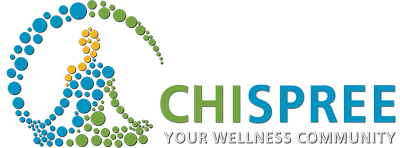Eating Styles Explained- Veg, Paleo, Lacto-ovo-pescatarian..?
Diet, you are what you eat.
Humans all over the world eat a variety of diets, some traditional, some not, some cultural or religious, some completely plant based and some almost completely animal based. Here is a list of some common diets that people choose to eat by and what each includes.
Vegetarian Diets:
A vegetarian diet is one which excludes meat. Vegetarians also avoid food containing by-products of animal slaughter, such as animal-derived rennet and gelatin.
- Lacto vegetarianism: A vegetarian diet that includes certain types of dairy, but excludes eggs, and foods which contain animal rennet.
- Lacto-ovo vegetarianism: A vegetarian diet that includes eggs and dairy.
- Vegan diet: In addition to the requirements of a vegetarian diet, vegans do not eat food produced by animals, such as eggs and dairy products.
Semi-vegetarian Diets:
- Flexitarian diet: A predominantly vegetarian diet, in which meat is occasionally consumed.
- Pescetarian diet: A diet which includes fish but not meat.
- Lacto-peascatarian: A diet which includes fish and dairy foods.
- Lactoo-ovo-pescatarian: A diet which includes fish, dairy, and eggs.
- Plant-based diet: A broad term to describe diets in which animal products do not form a large proportion of the diet. Under some definitions a plant-based diet is fully vegetarian; under others it is possible to follow a plant-based diet whilst occasionally consuming meat.
Other Diets:
- Alkaline diet: The avoidance of relatively acidic foods – foods with low pH levels – such as grains, dairy, meat, sugar, alcohol, caffeine and fungi. Proponents believe such a diet may have health benefits; critics consider the arguments to have no scientific basis.
- Blood Type Diet: A diet based on a belief that people’s diets should reflect their blood types
- DASH Diet (Dietary Approaches to Stop Hypertension): A recommendation that those with high blood pressure consume large quantities of fruits, vegetables, whole-grains and low fat dairy foods as part of their diet, and avoid sugar sweetened foods, red meat and fats.
- Eat-clean diet: Focusses on eating foods without preservatives, and on mixing lean proteins with complex carbohydrates
- Gluten-free diet: A diet which avoids the protein gluten, which is found in barley, rye and wheat. It is a medical treatment for coeliac disease.
- Mediterranean diet: A diet based on habits of some southern European countries. One of the more distinct features is that olive oil is used as the primary source of fat.
- Omnivore: An omnivore consumes both plant and animal-based food.
- Organic food diet: A diet consisting only of food which is organic – it has not been produced with modern inputs such as chemical fertilizers, genetic modification, irradiation or food additives.
- Paleolithic diet: Can refer either to the eating habits of hunter-gatherer humans during the Paleolithic era, or of modern dietary plans based on these habits.
- Raw foodism: A diet which centres on the consumption of uncooked and unprocessed food. Often associated with a vegetarian diet, although some raw food dieters do consume raw meat.
In today’s world of global connectivity, shared culture, and the ability to transport food worldwide, we have more food options than ever before. No matter what type of diet you choose, be sure to select foods that are processed as little as possible and organic if available. Along with a fitness routine, a healthy diet is a key foundation to overall health and can be part of the cure to many common lifestyle related conditions and weight management issues. Choose wisely and stay healthy!
Work with your health care provider and browse our Merchant Directory for other options to include the assistance of a Nutrition expert, Personal Trainer, Holistic Health Services, Lifestyle Coach, or to find Healthy Food options.
Source: Wikipedia
Author: Tony Montijo, BS Kinesiology, CPT, CES






